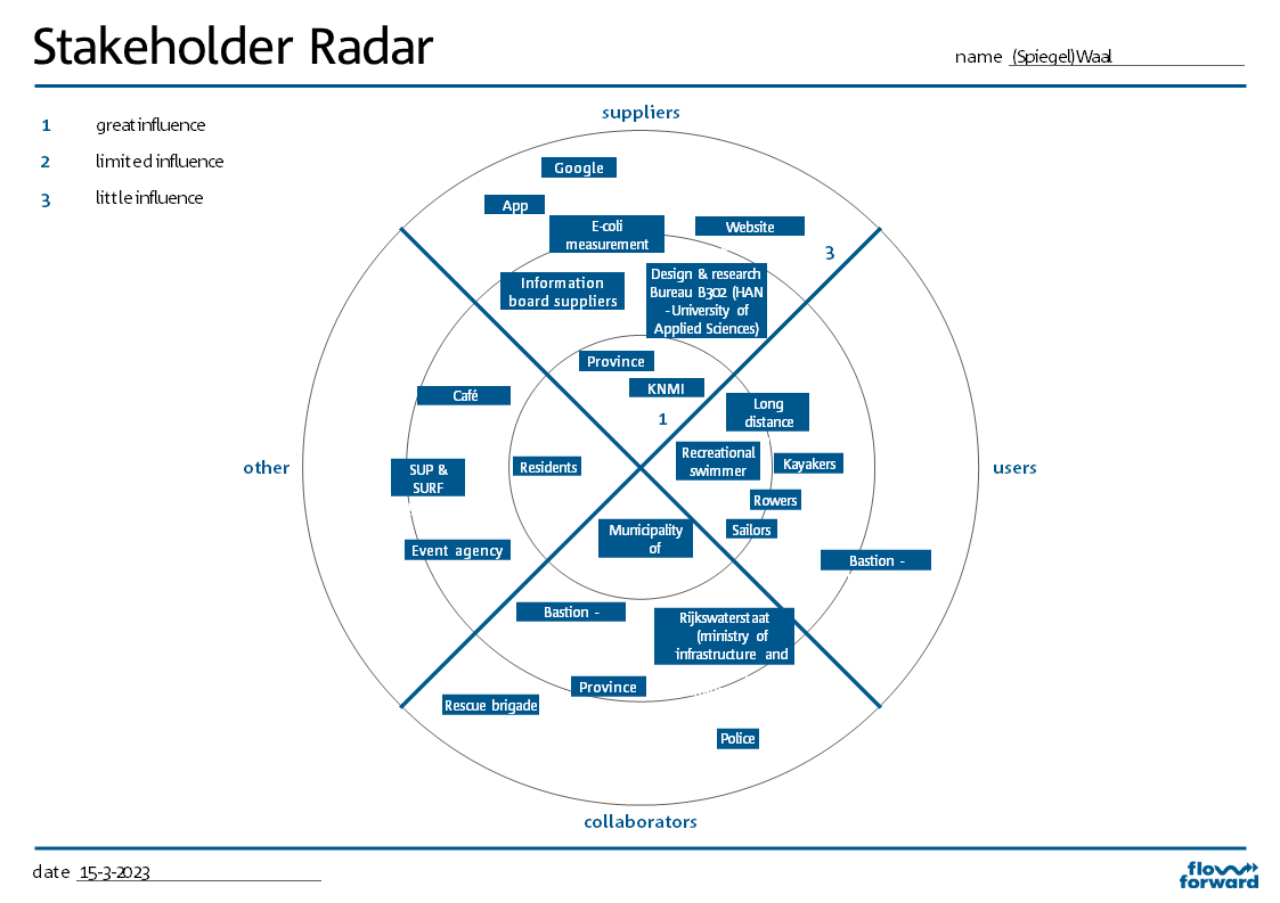Stakeholder Radar

Tips for use
You can do this analysis by yourself or with colleagues. Make a large printout of the Stakeholder Radar to use in a brainstorming session. Have a look at the example of the (Spiegel)Waal to get a better understanding of what a Stakeholder Radar can look like.
How to use
The Stakeholder Radar helps you to identify and categorize stakeholders. Stakeholders are divided into three different levels on the Stakeholder Radar based on the amount of influence they have.
Level 1: great influence
Stakeholders on this level are strategic partners that are very important or even critical to the outcome of your experiment. You should have a close relationship with them and need to involve them in your decision-making process, taking their perspective into account.
Level 2: limited influence
These stakeholders have some influence on the outcome of your experiment. They are not critical, but they provide valuable contributions. The stakeholders may be hard to replace. You would like to inform or maybe consult them, but they do not have to be involved in major decisions.
Level 3: little influence
These types of stakeholders may provide complementary resources. Partnering with them occurs on an operational level, they have very little influence on the outcome of your experiment.
Furthermore, there are four types of stakeholders.
Suppliers
A supplier is a person or an organization that supplies goods or services. Suppliers provide you with something that you require and that you do not have yourself. A supplier can assist in the development of a minimum viable product or, for example, support in doing field research or providing knowledge of training.
Write down the names of those that provide you with something needed. Take into account that one supplier might have more influence than another. Divide the suppliers over the three levels.
Users
A user is someone or something that is using the area that you focus on. It is important to map this group, for example, it concerns the end-user of a water area and is directly confronted with the outcome of your experiment.
Write down every person or group that enters the area. Take into account that one group of users might have more influence than another and therefore has more influence on the success of the outcome. Divide the users over the three levels.
Collaborators
A collaborator is a person or an organization that works with you to realize the same goals. Together with the collaborator your experiment can achieve more. For instance, in collaboration, you can obtain greater resources, recognition and reward. Collaboration could save a lot of time and money.
Write down the names of those that you want to collaborate with. Keep in mind that one collaborator might be more important than another. Divide your collaborators over the three levels.
Other
There could be other kinds of stakeholders that are specific to your experiment. For instance, a boot rental company has many area-related stakeholders such as restaurants, rowing clubs and lifeguards.
Write down the names of the stakeholders that are important in your area or to your experiment. Keep in mind that one stakeholder might have more influence than another. Divide your stakeholders over the three levels.